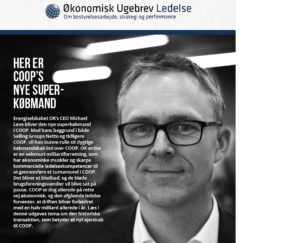Morgan Stanley skriver i en analyse af miljøvenlige investeringer, at det ikke altid er bedst at satse direkte på investeringer i producenter af vedvarende energi, såsom vindmøller eller el-biler. Det kan få en større effekt på miljøet at investere i virksomheder, der ganske enkelt bruger mindre energi eller er mindre belastende for klimaet. F.eks. er mange high-tech selskaber klima-venlige. Det har Morgan Stanley lavet en strategi for.
Managing Clima Change Risk in Your Portfolio
For carbon-conscious investors armed with the relevant data and methodology, one compelling strategy may be as simple as investing in high-quality businesses with low carbon footprints.
An increasing number of asset owners cite the need to address climate change in their portfolios as a leading priority, but they often feel ill-equipped to meet the challenge. In addition to accounting for the physical risks to companies’ properties, supply chains or employees, they must grapple with how to measure transitional costs, such as policy changes and shifting consumer behavior, which could also affect market valuations.
One compelling strategy to address climate change in portfolios may at the same time offer the advantage of simplicity: Invest in steady compounders, or companies with high-quality, franchise businesses and a high return on operating capital. Not only can they compound their earnings over time, but they typically also have a low-carbon footprint.
Scoping the Emissions Value Chain
How do we go about identifying such opportunities? As active stock-pickers, we believe that by seeking businesses with intangible, rather than physical, assets which sell products or services that typically have a lower-than-average carbon footprint, we can also address climate change risks in our portfolios.
In addition, we analyze the various sources of greenhouse-gas emissions across the value chain, to which companies may be exposed.
Let’s start with parsing greenhouse-gas accounting, which divides all emissions into three scopes:
- Scope 1 emissions comprise a company’s own direct emissions from its coal or natural-gas power plants, cement kilns, steel furnaces or trucks.
- Scope 2 emissions are embedded in the organization’s electricity purchases. They depend on the energy intensiveness of the factory or production and the electricity provider’s energy mix, whether renewables or fossil fuels—now a matter of choice in many countries.
- Scope 3 emissions comprise indirect sources related to a company’s supply chains or customer logistics and product use.
The first two types of emissions are reasonably straightforward to assess, and most companies regularly report such data. Just three sectors in the MSCI World Index—utilities, energy and materials—account for around 80% of these emissions.
But, comparing companies’ Scope 3 emissions can be more difficult, due to lack of data and double-counting. For example, the same carbon-dioxide emissions from aluminum produced for a soft drink can may be included in the calculations by the aluminum smelter, can manufacturer, bottler and retailer. Whose emissions are they?
However, if companies—and in turn, investors—can better understand the full value chain of emissions, including Scope 3, and identify where the risks are, they can help set reduction targets, engage with suppliers and other partners, and improve communications and corporate reputations.
Options for Managing Carbon in a Portfolio
Now, let’s look at three traditional approaches by public equity investors to reduce carbon exposure in their portfolios.
- Invest in companies that directly contribute to decarbonization, such as renewable energy producers. While clear-cut, this approach has hard limits: According to Factset, the subset of Alternative Power Generation companies constitutes a mere 0.24% of the MSCI World Index free float.1
- Given the scarcity of such pure play companies, another related approach is to invest in companies that have small but growing exposure to business areas that contribute to energy transition, e.g. ‘mainstream’ industrials that provide smart grid or renewable energy equipment. While this approach casts the net wider, it is still relatively niche.
- Divest from companies that own fossil-fuel reserves, given their potential for significant future carbon emissions. Some might argue, however, that this fails to address current emissions across other carbon-heavy sectors that don’t directly own fossil-fuel reserves, such as utilities.
- Invest in index strategies, which can help dilute a portfolio’s carbon impact to achieve a desired target. In a sample of 20 exchange-traded funds classified as low-carbon by Morningstar, for example, the weighted average carbon intensity reduction vs. the relevant benchmark was 49%.
High-Quality, High-ROOCE Companies
It’s possible to do better. For those seeking an active investment approach, you don’t have to explicitly allocate to an environmentally focused strategy to achieve a low carbon footprint.
Because carbon emissions are in fact capital-intensive, a strong inverse correlation exists between return on operating capital employed (ROOCE, a key metric to assess company quality) and carbon intensity. High-quality and high-ROOCE companies aren’t just steady compounders, they also have a structurally smaller carbon footprint.
Examples of this abound. Consider software and IT service providers, or consulting firms and media content companies that by definition have low total carbon footprint per unit of revenue, which is limited to their offices, data centers and staff travel.
Even with the remarkable growth of cloud computing services, major software companies’ Scope 1 and 2 intensity remain relatively low, and many have made significant progress sourcing renewable power for their data centers.
Other examples include companies that sell physical goods. Take, for example, manufacturers of healthcare or consumer products, which have Scope 1 and 2 emissions-per-million of sales that are still significantly lower than a broad market index because they operate in the low-carbon, high-value-added part of the supply chain.
Their products also typically have relatively low to no product-use-related Scope 3 emissions, compared with more energy-intensive activities—such as driving petrol cars or flying planes. These companies also face lower disruption risk from the decarbonization trend due to their strong pricing power and indispensable nature of their products.
For these reasons, investing in a concentrated portfolio of high-return-on-capital compounders may significantly reduce carbon exposure, without sacrificing long-term performance.








